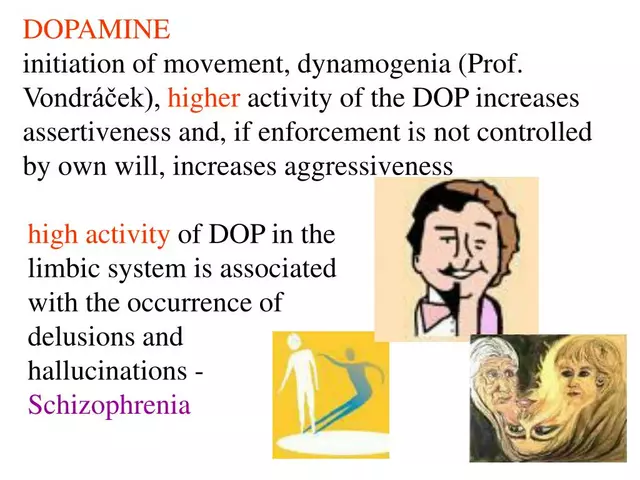TL;DR
- Atrial fibrillation (AF) can count as a disability under the Equality Act 2010 if it has a long-term, substantial effect. That triggers a legal duty on your employer to make reasonable adjustments.
- You don’t need a formal diagnosis letter to start the process. A fit note or GP/cardiologist letter describing functional impact is enough to get the ball rolling.
- Adjustments can include flexible hours, breaks for symptoms, remote work, shift tweaks, cooler workspaces, reduced travel, adjusted performance targets, and time off for cardiology care.
- From April 2024, you can request flexible working from day one. Employers must respond within two months and consult before refusing.
- If your request is ignored or refused without a valid reason, use your grievance process, ask for Occupational Health, try ACAS early conciliation, and keep the three months minus one day tribunal deadline in mind.
AF can be invisible until it isn’t. One minute you’re presenting; the next your heart is racing and sweat beads on your neck. You shouldn’t have to choose between your job and your health. Here’s a clear, UK‑specific roadmap to secure adjustments that let you work safely and well-without feeling like you’re asking for special treatment.
Your UK rights with atrial fibrillation: what’s protected in 2025
First, the law. In the UK, the Equality Act 2010 protects people with disabilities. You don’t have to use the word “disabled” to be protected. You meet the legal test if you have a physical or mental impairment with a “substantial” (more than minor or trivial) and “long-term” (12 months+ or likely to recur) effect on your ability to do day-to-day activities. AF is often long-term, sometimes episodic. If palpitations, breathlessness, fatigue, dizziness, or treatment side effects limit things like concentrating, standing for long periods, commuting, or meeting strict deadlines-especially when episodes recur-this often meets the threshold. The EHRC Code of Practice treats fluctuating conditions as potentially qualifying when they are long-term and have substantial effects during episodes.
Once the Act applies, your employer has a legal duty to make reasonable adjustments (Section 20). That can mean changing how things are done (policies like rigid breaks), providing equipment (like a cooling fan), altering your workplace (quieter space), or reallocating part of a role if it’s a barrier. There’s also protection against discrimination arising from disability (Section 15), indirect discrimination (Section 19), harassment (Section 26), and victimisation (Section 27). You shouldn’t be penalised for disability-related absences without the employer considering adjustments to absence triggers.
Worried about disclosure? Health details are “special category” data under UK GDPR. Your employer needs a lawful basis and safeguards to process it. You can disclose enough to explain functional impact without sharing every medical detail. HR and Occupational Health should keep clinical information confidential; managers usually get practical restrictions and suggested adjustments, not your full medical file.
There are 2024-2025 updates worth knowing. From 6 April 2024, the right to request flexible working is a day‑one right, not just after 26 weeks. Employers must consult before refusal and respond within two months. They can still refuse on specific business grounds (e.g., cost, service impact), but they now have to show they considered alternatives.
Sick pay and time off: Statutory Sick Pay (SSP) in 2024/25 is £116.75 per week for up to 28 weeks if you qualify; your employer may offer more under a company scheme. Fit notes can now be issued by doctors, nurses, pharmacists, and physiotherapists. If your fit note says “may be fit for work” with suggestions, that’s a strong nudge to trial adjustments rather than send you home unpaid.
Government support exists too. Access to Work (via the DWP) can fund equipment, travel support when public transport isn’t safe, coaching for fatigue management, or job aids. You don’t need your employer’s “permission” to apply, but they may need to confirm details and may share funding depending on company size.
| Key fact | What it means for you | Source/Context (UK, 2025) |
|---|---|---|
| ~1.4 million people in the UK have AF | You’re not alone; employers should be familiar with adjustments | NHS England / British Heart Foundation (2024) |
| AF raises stroke risk about fivefold | Time off for treatment and symptom control is medically justified | British Heart Foundation; NICE guidance |
| Equality Act covers fluctuating conditions | Episodic AF can still be “long-term” if it recurs | EHRC Code of Practice |
| Flexible working is a day‑one right | Request sooner; response due in 2 months | Employment Relations (Flexible Working) Act 2023 (in force 2024) |
| Tribunal time limit | 3 months minus 1 day from the act complained of | Employment Tribunals Rules of Procedure |
| SSP £116.75/week (2024/25) | Plan finances if you need sickness absence | Gov.uk SSP rate for 2024/25 |
One more safety note: if you drive for work, check DVLA medical fitness guidance. Most people with AF can drive, but you must not drive during episodes that cause sudden incapacity (like fainting). Safety‑critical jobs (e.g., operating heavy machinery, working at height) should involve an Occupational Health risk assessment-with adjustments or alternative duties rather than knee‑jerk exclusion.
How to request adjustments: a simple step‑by‑step that works
You don’t need legal jargon to start this. Keep it practical and evidence‑light at first, then layer detail if asked.
Write down how AF actually affects your work. Think real tasks: meetings, calls, warehouse picking, standing on a shop floor, field travel, night shifts. Note patterns-heat, dehydration, caffeine, long standing, stress spikes, back‑to‑back meetings.
List concrete adjustments that would reduce risk and enable performance. Examples are below, but start with your own: “10‑minute recovery breaks when my heart rate spikes,” “limit night shifts,” “remote work on clinic days,” “cooler workstation near ventilation.”
Gather light evidence. A fit note with “may be fit for work with adjustments,” a brief GP or cardiology letter, or clinic summary printout is usually enough for the first ask. It’s about function, not your entire medical history.
Email your manager and HR. Be human and clear. Here’s a template you can copy:
Subject: Request for reasonable adjustments (Equality Act 2010)
Hi [Manager/HR],
I have atrial fibrillation, a long‑term heart rhythm condition. During episodes I can experience rapid heartbeat, dizziness, and fatigue. This can affect [e.g., back‑to‑back meetings, long standing, hot environments, strict KPIs without breaks].
Under the Equality Act 2010, I’m requesting reasonable adjustments so I can work safely and effectively. Adjustments that would help include:
• [e.g., flexible 10‑minute breaks when symptoms occur]
• [e.g., moving my desk to a cooler area / a desk fan]
• [e.g., remote work on [day] after evening clinic / adjusting start time by 30 minutes]
• [e.g., adjustment to attendance triggers for AF‑related absences]
I’ve attached a fit note/letter that outlines functional impact. I’m happy to attend Occupational Health to agree a practical plan.
Could we meet next week to discuss and trial adjustments?
Thanks,
[Name]Suggest an Occupational Health (OH) referral. OH bridges medical needs and business realities. Ask for a report that answers: (a) Does the Equality Act likely apply? (b) What adjustments are recommended? (c) How long? (d) Any safety limits? You can usually see the draft before it’s sent to your employer.
Apply to Access to Work in parallel if gear or travel support could help. Things like a cooling fan, noise‑reducing headset, a sit‑stand desk, or occasional taxis if public transport triggers episodes can be considered.
Use the new flexible working rules. If hours or location are the issue, put in a flexible working request. Keep it short, describe impact on the team, and propose a review point. Employers now must consult before refusal and reply inside two months.
Agree a review date. AF can settle after a cardioversion or ablation; meds change; seasons change. A 6-12 week review lets you tweak what’s not working.
Two negotiation tips from the trenches. First, offer a trial. “Let’s try this for eight weeks” is easier to say yes to than “forever.” Second, frame adjustments as performance enablers. “With a cooler workstation and brief recovery breaks, I’ll maintain my call volume without sick days.” That’s a business win.
Keep records. Save emails, fit notes, and OH reports. If your manager is supportive but needs internal sign‑off, your paper trail protects both of you.

Adjustments that actually help with AF (real‑world examples and checklists)
AF isn’t one‑size‑fits‑all. Triggers vary, symptoms ebb and flow, meds have side effects. Pick what fits, then personalise.
Work patterns and place
- Flexible start/finish to avoid rush‑hour heat/exertion spikes.
- Remote or hybrid days after clinic visits, cardioversion, or heavy symptom days.
- Adjust shift patterns: avoid nights or rapid rotations; no back‑to‑back late/early shifts.
- Protected short breaks when heart rate spikes; micro‑breaks to hydrate and reset.
Environment
- Cooler workstation or fan if heat triggers episodes.
- Quiet space to reduce adrenaline spikes and regain rhythm.
- Permission to keep water at the station; easy access to toilets (diuretics can increase frequency).
Role/task tweaks
- Limit prolonged standing or heavy lifting; offer sit‑stand options.
- Reallocate safety‑critical tasks during unstable periods; provide alternatives temporarily.
- Reduce high‑pressure, back‑to‑back meetings; schedule recovery buffers.
Performance/attendance
- Adjust attendance triggers to avoid penalising disability‑related absences.
- Shift from rigid hourly KPIs to outcomes where possible.
- Allow paid time off for planned cardiology/INR clinics if company policy allows; unpaid or swapped shifts otherwise-just plan it.
Tools and support
- Noise‑reducing headset; ergonomic chair; sit‑stand desk.
- Wearables tolerated at work to spot episodes (no clinical monitoring claims, just early warning).
- Training for a named buddy/manager on what to do during episodes.
Emergency plan (keep it simple):
- How to recognise your episode (you describe your typical signs).
- What you want colleagues to do (offer seat, water, quiet space; call 999 if chest pain, fainting, or stroke signs like FAST).
- Who to contact (next of kin via HR, not blasting your medical info to the department).
If your job is safety‑critical: agree a risk assessment and temporary adjustments-not a permanent ban. Often, short‑term alternative duties during medication changes or post‑procedure recovery are enough. Many people return to full duty after stabilisation.
Realistic recovery time off you can reference (always individual, follow your clinician):
- Electrical cardioversion: typically 24-48 hours rest before desk work; longer for physical roles.
- Catheter ablation: many desk workers take 1-2 weeks off; physical jobs may need longer.
- New medications (e.g., beta‑blockers): expect a settling period with fatigue; review after 2-4 weeks.
Pro tips that avoid friction:
- Use “trial period” language; it lowers the stakes.
- Offer data: “On two remote days after clinic, my symptom days dropped and output rose 12%.”
- Bundle low‑cost adjustments first (breaks, buffers, desk move) while Access to Work processes gear.
- If your workplace bans personal fans or bottles, get explicit written exceptions tied to your adjustment plan.
Quick checklist you can print:
- My triggers are: [heat] [long standing] [stress spikes] [caffeine] [dehydration] [back‑to‑back calls]
- My early warning signs: [fluttering] [breathless] [dizzy] [fatigue surge]
- Adjustments that help: [cool space] [micro‑breaks] [schedule buffers] [remote day] [sit‑stand]
- Emergency steps: [sit, hydrate, quiet] [call 999 if chest pain/fainting/FAST]
- Review date: [in 8 weeks]
One more practical angle: performance conversations. Ask managers to separate capability (can you do the job with adjustments?) from conduct (are you trying?). With AF, capacity fluctuates. A fair process recognises ups and downs and focuses on enabling stability-then measuring outcomes.
If things get stuck: refusals, ACAS, FAQs and next steps
Sometimes you meet a brick wall. Here’s your escalation ladder, from low‑friction to formal.
Ask “why” in writing. Employers can refuse if an adjustment isn’t reasonable (e.g., huge cost, serious impact on service). But they should suggest alternatives. Press for a written explanation and propose a time‑limited trial instead.
Request Occupational Health if not already done. A clear OH report stating “Equality Act likely applies and X/Y/Z adjustments are recommended” is hard to ignore.
Use the grievance process. Keep it factual: what you asked, why, what evidence says, why refusal harms you, and what you want now. Attach your supporting documents.
ACAS Early Conciliation. Mandatory before a tribunal. It’s free, and many employers settle or sort adjustments here.
Employment Tribunal. The time limit is three months minus one day from the discriminatory act. If you’re close to the deadline, start ACAS promptly-time pauses during conciliation. Get legal advice from a union, Law Centre, or pro bono clinic if possible.
Manager or HR reading this? You have legal risk, yes, but also a retention opportunity. AF is common and often manageable with low‑cost changes. Trial, measure, iterate. Most employees just want to work well without tipping their physiology into chaos.
Mini‑FAQ
Do I have to say “I’m disabled”? No. You only need to describe how AF affects your work and that it’s long‑term. Use Equality Act language if helpful; the protection doesn’t depend on labels.
What if my AF is “paroxysmal” and rare? Fluctuating conditions can still qualify if they’re likely to recur and have substantial effects during episodes. Document frequency and impact.
Can my boss ask for my full medical records? Not without proper consent and a clear purpose. An OH report with functional advice is usually enough. Health data is protected under UK GDPR.
Will adjustments be permanent? Not necessarily. Agree review dates. If your AF stabilises after treatment, you can scale back. If it worsens, you can add support.
What if I’m disciplined for disability‑related absence? Ask for an adjustment to absence triggers and review whether Section 15 (discrimination arising from disability) may apply. Get advice quickly.
Do I qualify for Access to Work? If your health condition affects you at work, you likely do. Awards are tailored; funding level depends on need and employer size.
What should colleagues do during an episode? Sit you down, offer water, keep it calm. Call 999 if chest pain, collapse, or stroke signs (FAST). Don’t crowd or panic.
Troubleshooting different scenarios
Small employer says “we can’t afford it.” Ask for a breakdown of cost and propose lower‑cost alternatives or a short trial. Mention Access to Work funding. “Reasonable” scales with employer size, but many adjustments cost little.
Safety‑critical role pushback. Ask for a formal risk assessment and temporary redeployment while treatment stabilises, with a planned review after clinical milestones.
Hybrid policy says “office three days or else.” Use the flexible working route plus Equality Act adjustments. Propose a pattern tied to clinic days, fatigue patterns, and objective output measures.
Performance plan looming. Ask for OH input first and for adjustments to KPIs (e.g., call targets minus recovery time). Ensure disability‑related absence isn’t counted the same as non‑disability absence.
New manager resets everything. Share your existing adjustment agreement, ask HR to re‑confirm, and schedule a review meeting. Agreements don’t evaporate with new leadership.
If you want a one‑page starter plan to put in front of your manager tomorrow, use this structure:
- Condition impact: “AF causes sudden rapid heartbeat, occasional dizziness, and fatigue. Episodes occur about [x]/month and last [y].”
- Risks at work: “Heat, long standing, and back‑to‑back meetings increase episodes.”
- Adjustments requested (trial 8 weeks): “Cooler workstation, 10‑minute recovery breaks, remote day after clinic, adjusted KPI to reflect breaks.”
- Safety: “If chest pain, fainting, or stroke signs, treat as emergency.”
- Review: “Meeting in week 8 to assess data and adjust.”
Citations you can mention if challenged on the facts: British Heart Foundation and NHS England data for prevalence and stroke risk; EHRC Code of Practice for fluctuating conditions; Employment Relations (Flexible Working) Act 2023 for day‑one flexible working in 2024; Gov.uk for SSP rates and Access to Work.
One last reassurance: You’re not being difficult by asking for workplace accommodations. You’re doing the grown‑up thing-matching the job to your physiology so you can deliver consistently. Most managers get that once you show them the plan.




Marie Green
August 27, 2025 AT 04:15I totally get how scary AF episodes can feel at work it’s like your heart decides to throw a surprise party and nobody was invited. You’re not alone many people are dealing with the same thing and the law actually backs you up. The Equality Act lets you ask for things like cooler workspaces or short breaks without looking like a troublemaker. It’s all about keeping you safe and productive.
TOM PAUL
August 30, 2025 AT 16:15Right on, it’s great that you’re taking the first step. A quick email to HR with a simple list of what you need can start the conversation. You’ll be surprised how many managers are willing to try a trial period.
Ash Charles
September 3, 2025 AT 04:15Listen up-don’t wait for your boss to figure it out. Throw the adjustment request on their desk and demand a response. If they try to stall you’ve got the law on your side, so use it.
Michael GOUFIER
September 6, 2025 AT 16:15While I appreciate the urgency, it is advisable to adopt a measured approach. Submitting a concise written request accompanied by medical documentation establishes a clear record. This not only demonstrates professionalism but also facilitates a constructive dialogue with the employer. I trust this methodology will yield a favorable outcome.
michael Mc Laughlin
September 10, 2025 AT 04:15Hey, if you can get a cool fan and a 10‑minute break it’ll make a huge diff. Even a tiny tweak like moving your desk away from the heater helps. Keep it simple and watch how your day gets easier.
Luke Schoknceht
September 13, 2025 AT 16:15Let me break down why you shouldn’t settle for “just a little” when your heart is on the line. First, the assumption that a small adjustment solves a complex physiological issue is naive. Second, many employers underestimate the cumulative fatigue from repeated episodes, which can cascade into serious safety hazards. Third, the legal framework exists precisely to prevent such half‑measures; you’re entitled to a comprehensive plan, not a token gesture. Fourth, the cost of a decent cooling system or ergonomic chair is trivial compared to the expense of lost productivity and potential workers’ comp claims. Fifth, setting a precedent of minimal accommodation emboldens other managers to skimp on necessary support. Sixth, the psychological toll of feeling ignored can exacerbate symptoms, creating a vicious cycle. Seventh, you have the right to request a trial period that can be objectively evaluated with data, not mere opinion. Eighth, if you’re denied, the grievance and ACAS routes are there for you to leverage. Ninth, many employees have successfully negotiated flexible hours and remote work, proving it’s not an impossibility. Tenth, remember that the Equality Act’s purpose is to level the playing field, not to force you into a perpetual compromise. Eleventh, ensure you document every request and response; the paper trail is your armor. Twelfth, consider involving a union rep early; they can add pressure and expertise. Thirteenth, don’t let a dismissive manager’s attitude dictate your health outcomes. Fourteenth, a supportive colleague can champion your cause in meetings. Fifteenth, ultimately, you deserve to work in an environment that respects both your contributions and your wellbeing.
mauricio gonzalez martinez
September 17, 2025 AT 04:15I’m not sure why you think it’s okay to ignore the obvious signs that something’s wrong.
Christian Freeman
September 20, 2025 AT 16:15From a philosophical standpoint, the workplace is a microcosm of society’s willingness to adapt to human variability. If we can’t accommodate a heart condition, what does that say about our collective empathy? The law provides a scaffold, but the cultural shift comes from everyday conversations like this.
julie shayla
September 24, 2025 AT 04:15Oh, sure, just wave a magic wand and the boss will hand out fans like candy. Reality check: most managers need a checklist and a deadline, not a pep talk.
Super Mom
September 27, 2025 AT 16:15First, let’s acknowledge that atrial fibrillation is a real, sometimes invisible health issue that can dramatically affect daily work performance. Second, the Equality Act 2010 recognizes conditions like AF as potential disabilities when they have a substantial and long‑term impact. Third, employers are legally obligated to make reasonable adjustments, which can range from flexible hours to providing a cooler workstation. Fourth, you don’t need a formal diagnosis letter; a fit note or a brief summary from your GP or cardiologist highlighting functional limitations is sufficient. Fifth, when drafting your request, be clear and concise about how AF impacts specific tasks such as back‑to‑back meetings, standing for long periods, or commuting during rush hour. Sixth, propose concrete adjustments like 10‑minute recovery breaks, a cooler desk area, remote work on days following a clinic visit, and adjusted performance metrics that account for episode recovery time. Seventh, attach the medical note and offer to meet with Occupational Health to develop a tailored plan. Eighth, be aware that from April 2024, flexible working requests can be made from day one, and employers must consult before refusing and respond within two months. Ninth, if your request is ignored, you can raise a grievance, involve your union, and seek early conciliation through ACAS before moving to an employment tribunal. Tenth, keep thorough records of all communications, medical documents, and any decisions made, as this paper trail will be vital if legal action becomes necessary. Eleventh, consider applying for Access to Work funding, which can cover equipment like cooling fans, ergonomic chairs, or transportation assistance, reducing the financial burden on your employer. Twelfth, remember that a short‑term trial period can make employers more receptive, as it demonstrates minimal risk and potential productivity gains. Thirteenth, if you work in a safety‑critical role, request a formal risk assessment to identify which duties can be adjusted temporarily while you stabilise on medication or after procedures. Fourteenth, use the language of performance enablers rather than accommodations; frame adjustments as ways to maintain or improve output, which aligns with business interests. Fifteenth, schedule a review after 8‑12 weeks to assess the effectiveness of the adjustments and make data‑driven suggestions for refinements. Sixteenth, maintain open communication with your manager, highlighting any improvements in symptom control or productivity metrics. Finally, stay proactive and assertive-knowing your rights and presenting a well‑structured plan can make the difference between a supportive workplace and an unnecessary legal battle.
Jean Tredoux
October 1, 2025 AT 04:15All of that sounds like a lot of paperwork. Are they really going to fund a fan?
cedric Gicquiaud
October 4, 2025 AT 16:15They’re probably hiding the truth about workplace health.
Mason Grandusky
October 8, 2025 AT 04:15Honestly, the Access to Work scheme can cover low‑cost items like a desk fan or a sit‑stand converter, and the employer can claim the money back as a tax‑deductible expense. If you present a clear cost‑benefit analysis showing reduced sick days, they’ll see it’s a win‑win. Plus, most big companies have a health budget exactly for these kinds of accommodations.
Spencer Riner
October 11, 2025 AT 16:15I’m curious about how often people actually get the flexible‑working right from day one. Does the law really force every employer to comply?
Joe Murrey
October 15, 2025 AT 04:15From what I’ve seen, the law is clear-employers must respond within two months and must have a genuine business reason to refuse. In practice, many just ask for more info or a trial period first.
Tracy Harris
October 18, 2025 AT 16:15It is incumbent upon us, as custodians of equitable labour practices, to scrutinise the statutory provisions that govern reasonable adjustments for cardiac arrhythmias. The jurisprudence affirms that even intermittent conditions may warrant protection when they impose a substantial impediment to occupational performance. Accordingly, the employer’s duty is not merely perfunctory but must be effectuated with deliberation and good faith. Failure to do so may constitute discrimination arising from disability, a violation that courts have consistently condemned.
Sorcha Knight
October 22, 2025 AT 04:15Wow, such a drama queen vibe 😂 But seriously, if the law’s on your side, just shout it from the rooftops and watch the adjustments roll in! 🚀